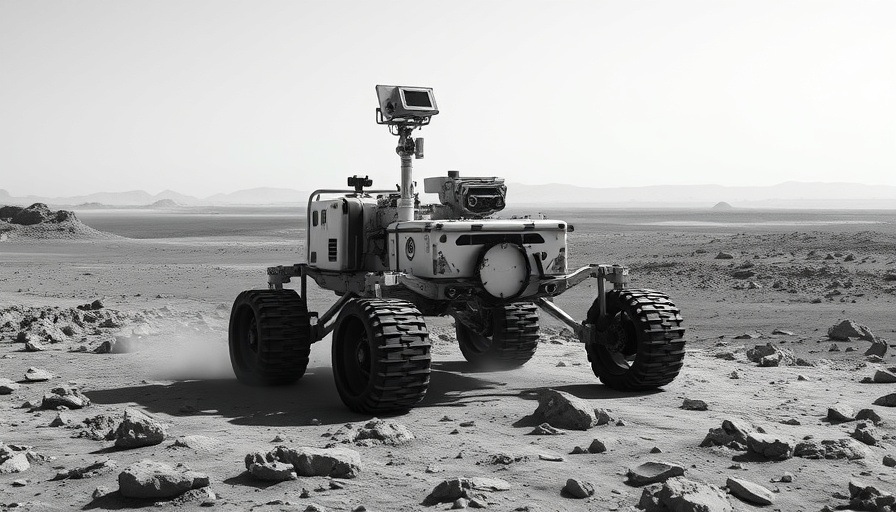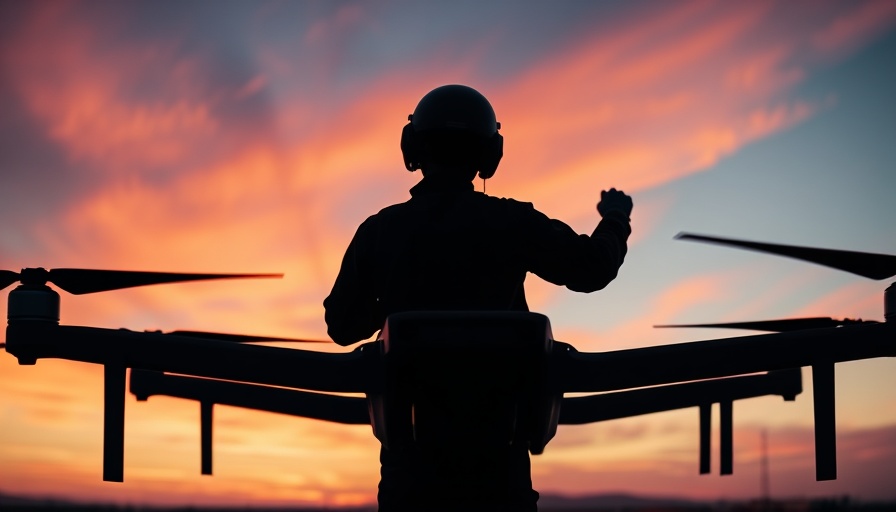
Curiosity’s Unyielding Journey: A Technological Evolution
As NASA’s Curiosity Rover celebrates its 13th year on Mars, it exemplifies the fusion of cutting-edge technology and exploration. Initially designed to traverse the Martian landscape and analyze geological samples, Curiosity has evolved to perform more efficiently. Engineers have given it enhanced autonomy and multitasking capabilities, allowing it to accomplish tasks simultaneously—like relaying critical data to a Martian orbiter while examining rock formations.
Navigating Mars: The Challenge of Energy Management
One of the most significant advancements in Curiosity’s functionality comes from its power source. Unlike the Spirit and Opportunity rovers, which depended on solar panels that were susceptible to Martian dust storms, Curiosity harnesses a multi-mission radioisotope thermoelectric generator (MMRTG) that utilizes decaying plutonium to produce a constant power supply. This reliability enables Curiosity's many scientific instruments, including cameras and analytical tools, to function optimally even during Martian winters when sunlight is limited.
The Unseen Work: Complex System Interactions
However, Curiosity's multi-faceted energy management system is not without challenges. As plutonium decays, the time needed to recharge its batteries increases, which can compromise the rover’s scientific output. Engineers continuously assess how much power each instrument consumes, adjusting Curiosity’s operations to ensure effective use of its energy budget. Reidar Larsen from NASA’s Jet Propulsion Laboratory noted the transition in their approach: “We were more like cautious parents earlier in the mission,” indicating a greater adaptability to unforeseen difficulties presented by the Martian environment.
Exploring the Ancient Martian Landscape
Curiosity’s recent endeavors have taken it to regions characterized by unique geological formations known as boxwork, remnants from ancient water interactions. The study of these formations is crucial for understanding if microbial life could have existed in Martian history. Data gathered from such investigations not only furthers our knowledge of Mars but also informs the search for life beyond Earth.
A Broader Impact: Curiosity’s Legacy
Beyond the immediate findings on Mars, Curiosity’s mission represents a vital step in humanity's quest for knowledge. The methodologies developed during its operation lay crucial groundwork for future Mars missions, including the Perseverance rover, which aims to gather samples for potential return to Earth. These advances are paving the way for what could one day lead to human colonization of Mars.
As we reflect on what Curiosity has accomplished over the last thirteen years, it serves as a reminder of the incredible feats that can be achieved through innovation and resilience. This rover is not just a scientific tool; it embodies human curiosity that drives us to explore the unknown.
With numerous lessons already learned and many discoveries yet to unfold, Curiosity’s journey offers rich insights into the potential for advanced robotics and autonomous systems in exploration. Its legacy encourages the next generations of engineers and scientists to push the limits of what we can achieve beyond Earth.
 Add Row
Add Row  Add
Add 




Write A Comment